Triumphant Pursuit of Jules Verne Trophy
Published on January 26th, 2017
(January 26, 2017) – The 31.5 trimaran IDEC SPORT sailed by Francis Joyon (FRA), Clément Surtel (FRA), Alex Pella (ESP), Bernard Stamm (SUI), Gwénolé Gahinet (FRA), and Sébastien Audigane (FRA) today won the Jules Verne Trophy, awarded for the fastest circumnavigation of the world by any type of yacht with no restrictions on the size of the crew, starting and finishing between the Le Créac’h Lighthouse off the tip of Brittany and the Lizard Point in Cornwall.
Crossing the finish today at 0749hrs UTC, Joyon and his crew sailed the 22,461 theoretical nautical mile course in 40 days, 23 hours, 30 minutes and 30 seconds, at an average speed of 22.84 knots. Out on the water, they actually sailed 26,412 nm at an average speed of 26.85 knots.
The team shattered the previous record by 4 days, 14 hours, 12 minutes and 23 seconds, beating the time of 45 days, 13 hours, 42 minutes and 53 seconds set by Loïck Peyron and his crew on the 40 VPLP-designed trimaran Banque Populaire V in January 2012.
Additionally, the IDEC SPORT team smashed no fewer than six intermediate records at Cape Leeuwin, off Tasmania, on the International Date Line, at Cape Horn, at the Equator and off Ushant.
On their way to becoming the fastest round the world sailors in history, there were some incredible daily performances along the way, such as on the fourteenth day, when they clocked up 894 miles averaging 37.3 knots. For eight days, they sailed more than 800 miles and seven over 700 miles. Aboard the muiltihull designed in 2005 for a crew of twelve, the team of six have made it all look so simple, working perfectly together.
“We set sail on December 16, uncertain about the outcome,” explained the youngest member of the crew, Gwénolé Gahinet. After completing a circumnavigation two years ago but falling short of the record, and aborting another attempt after seven days on November 27, 2016 because of a hold-up in the Doldrums, Joyon and his men set off again, hopeful that fate this time would prove kinder.
Very early on, they showed what they could do and by the fifth day of racing had gained a lead of more than 210 miles over the record. But in the Doldrums, which never seemed to want to help the red and grey maxi trimaran, they suffered in an area of thunderstorms, huge wind shifts and calms.
Averaging just 6.4 knots on December 21, IDEC SPORT was to have their worst day there, sailing just 186 miles in 24 hours. They got further and further behind the pace of their virtual rival, Banque Populaire V, and when they entered the roaring forties on the eleventh day, were 755 miles behind.
But momentum returned as IDEC SPORT managed to find her way around the edge of the calms in the St. Helena high, cutting across the South Atlantic to hop onto a Southern low. They moved towards this system from the north-east and Joyon and his men would stay ahead of that system, taking advantage of strong NW’ly winds for eleven days, when the speed would rarely drop below thirty knots.
With peak speeds of more than 44 knots, Joyon’s gang sailed straight across the inhospitable Southern Ocean, passing the Cape of Good Hope, then Leeuwin with just 4 days and 9 hours between the two capes. By January 4, they had extended their lead over the title-holder to a day and a half, as they passed to the south of Tasmania.
One Australian fan pointed out that they had taken just two days to pass under Australia, “which you can’t even do in a car!” Just over a week later, the team clocked up another record at Cape Horn, leaving Banque Populaire V 4 days and 6 hours behind IDEC SPORT.
While rival Loïck Peyron and his men had a quick climb back up the South Atlantic, IDEC SPORT had to deal with a series of classic weather patterns. Once past the Falklands, a deep low appeared off Argentina, offering Joyon and his crew a nasty swell hitting them head on and SW’ly winds. They had to find a compromise between pushing hard to make headway north and preserving the boat.
There were three possible routes off the south of Brazil with a series of transition zones. They could look for wind out to the east or sail upwind close to Brazil. Joyon with the support of his router, Marcel van Triest, chose a middle route to head north, which meant they had decent weather to pass Cape Frio and pick up the SE’ly trade winds. But finding the hidden door through the Doldrums would be another test.
Living up to its bad reputation, this slowed the maxi-trimaran IDEC SPORT in a calm patch, where although there was no thundery activity, the wind was very light. Once again, the analysis from Francis and Marcel suggested going around the outside a long way west and north of Fortaleza to enter the Northern Hemisphere. They pulled it off. “we never got entirely stopped,” exclaimed Joyon when he found the trade winds.
The final leg would in the North Atlantic would prove to be a triumphant sprint. Off the Cape Verde Islands, the wind gradually came around with the trade winds, offering IDEC SPORT a good angle and wind strength to approach the south of the Azores. Once again, Joyon and crew hopped onto the train and set off at speed for Brittany. They were back up to high speeds in excess of thirty knots to draw a parabola from NE Brazil to Brittany.
Triumphant, the small team on this large trimaran today have set a mark that may stand a very long time.
Facts and figures:
• The worst day was December 21 with a VMG of just 6.4 knots.
• Their best day was the 14th day when they sailed 894 nm, averaging 37.3 knots.
• Their biggest deficit in comparison to Banque Populaire was 755 nm on the 11th day (December 26).
• The maximum lead was on the 41st day (January 26).
• Their worst loss in 24 hours was on the 10th day (-384 nm) and their biggest gain was on the 25th day (+416 nm).
• Total distance actually sailed was 26,412 nm, in comparison to Banque Populaire V’s 29,002 nm.
Intermediate times:
Equator: 5 days, 18 hrs, 59 minutes, or 4 hrs and 3 minutes behind Banque Populaire V
Good Hope: 12 days, 19 hrs, 28 minutes, or 21 hrs and 40 minutes behind Banque Populaire V
Cape Agulhas: 12 days, 21 hrs, 22 minutes, or 21 hrs, 34 minutes behind Banque Populaire V
Cape Leeuwin: 17 days, 6 hrs, 59 minutes, or 16 hrs and 58 minutes ahead of Banque Populaire V
Tasmania: 18 days, 18 hrs and 31 minutes, or 1 day, 12 hrs and 43 minutes ahead of Banque Populaire V
Cape Horn: 26 days, 15 hrs and 45 minutes, or 4 days and 6 hrs ahead of Banque Populaire V
Equator: 35 days 4 hrs and 9 minutes, or 2 days, 22 hrs and 36 minutes ahead of Banque Populaire V.
Equator – Ushant: 5 days, 19 hrs, 21 minutes
IDEC SPORT RACING – Tracker – Facebook
Note: The 24 hour speed record of 908.2 nm (37.84 knot average) was set in 2009 by Banque Populaire 5, a 131-foot trimaran skippered by Pascal Bidegorry (FRA).
Background:
The Jules Verne Trophy is a prize for the fastest circumnavigation of the world by any type of yacht with no restrictions on the size of the crew, starting and finishing between the Le Créac’h Lighthouse off the tip of Brittany and the Lizard Point in Cornwall.
After starting on November 16, Francis Joyon (FRA) and his five crew on the 31.5m VPLP-designed trimaran IDEC SPORT need to finish by 22:00:53 UTC on Monday January 30 to beat the current record set January 2012 by Loïck Peyron and his crew on the 40 VPLP-designed trimaran Banque Populaire V of 45 days, 13 hours, 42 minutes and 53 seconds.

Francis Joyon (fourth from left) and his crew comprising Clément Surtel, Alex Pella, Bernard Stamm, Gwénolé Gahinet and Sébastien Audigane.
Jules Verne Trophy
Record to beat: 45 days, 13 hours, 42 minutes and 53 seconds set by Loïck Peyron and his crew of 13 in January 2012 on the trimaran Banque Populaire V (40 m)
Average speed to beat: 19.75 knots
Course: around the world via the three capes, Good Hope, Leeuwin, Horn.
Great circle distance: 21,600 miles
Start and finish line between Ushant (Créac’h Lighthouse and The Lizard (Cornwall).
IDEC SPORT trimaran
Trimaran with foils
Designers: VPLP
Previous names: Groupama 3, Banque Populaire VII
Initial launch: June 2006
Length: 31.50 m
Beam: 22.50 m
Displacement: 15 t
Draught: 5.70 m
Mast height: 33.50 m
Structure: carbon-nomex
Source: IDEC SPORT


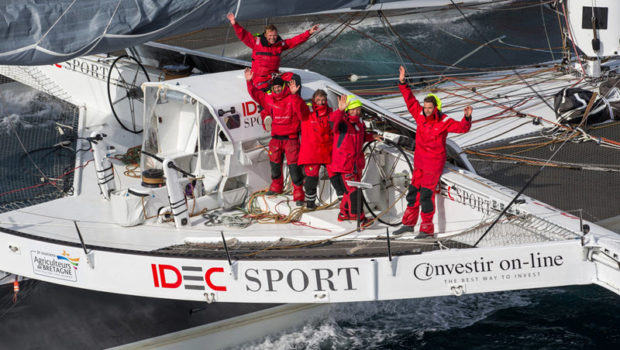


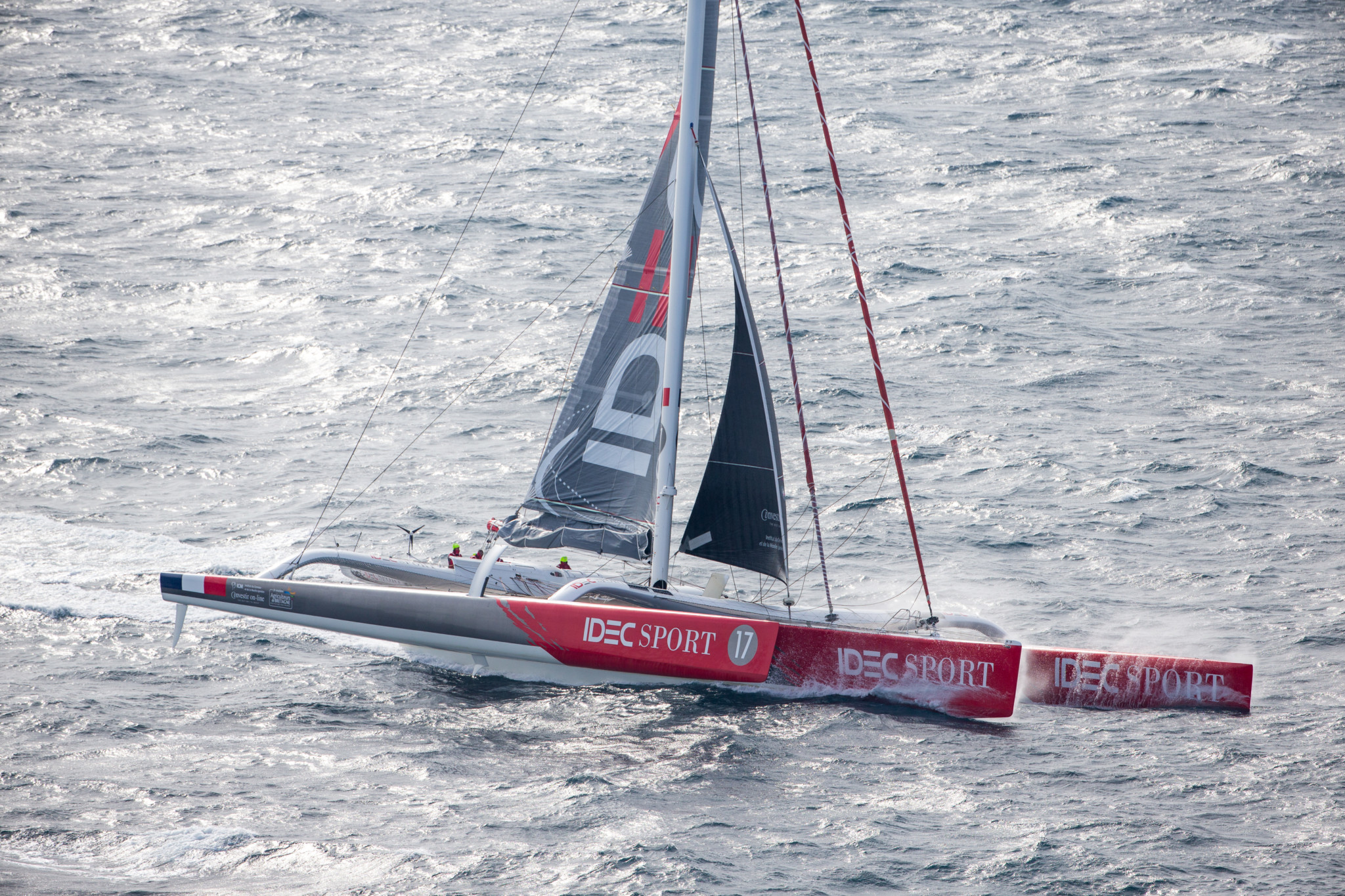
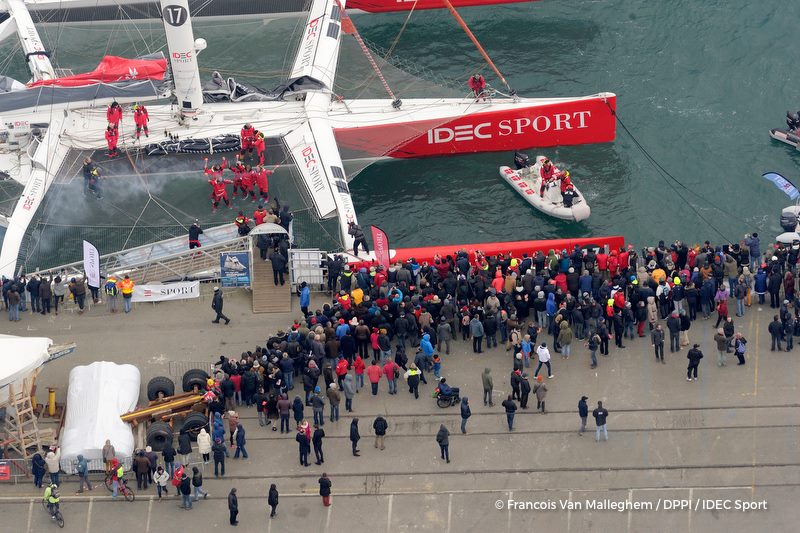
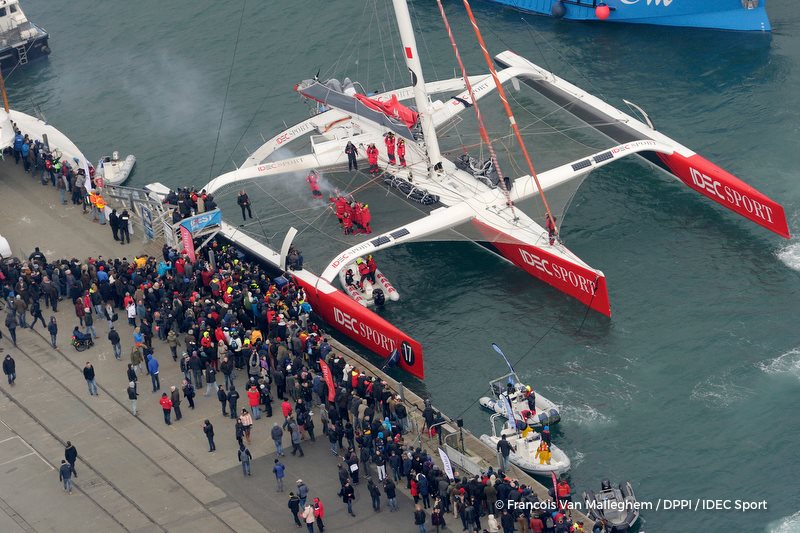
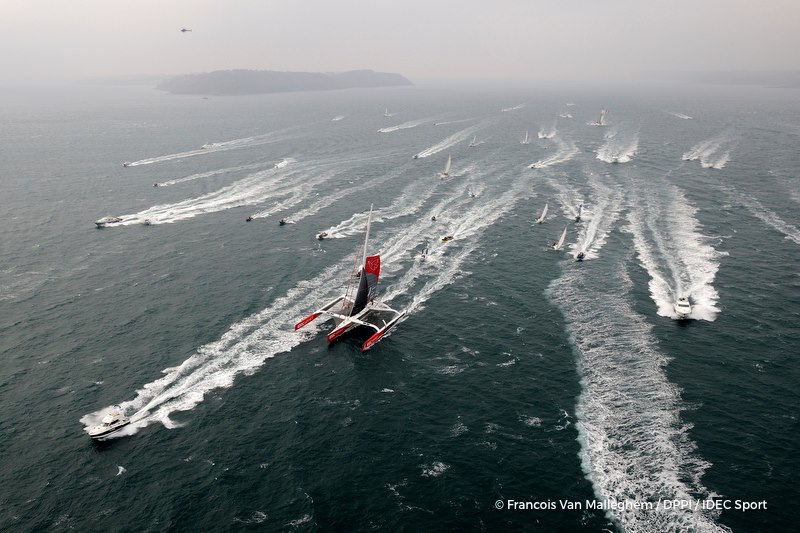
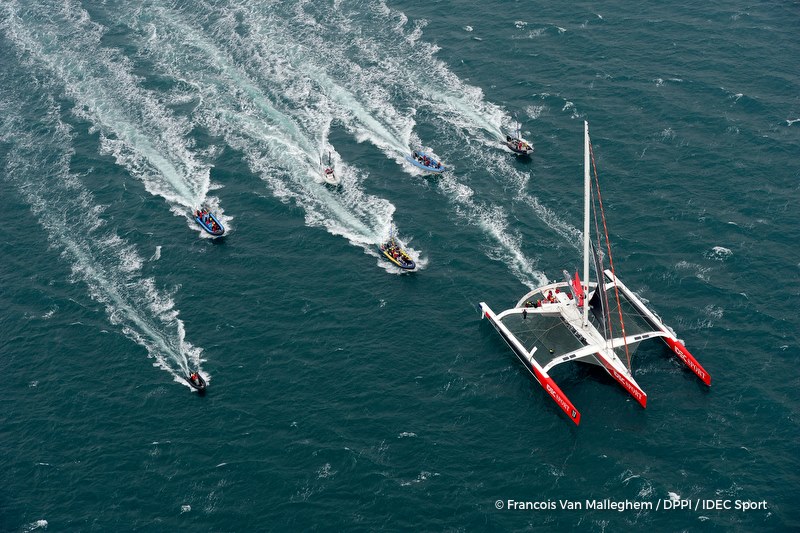
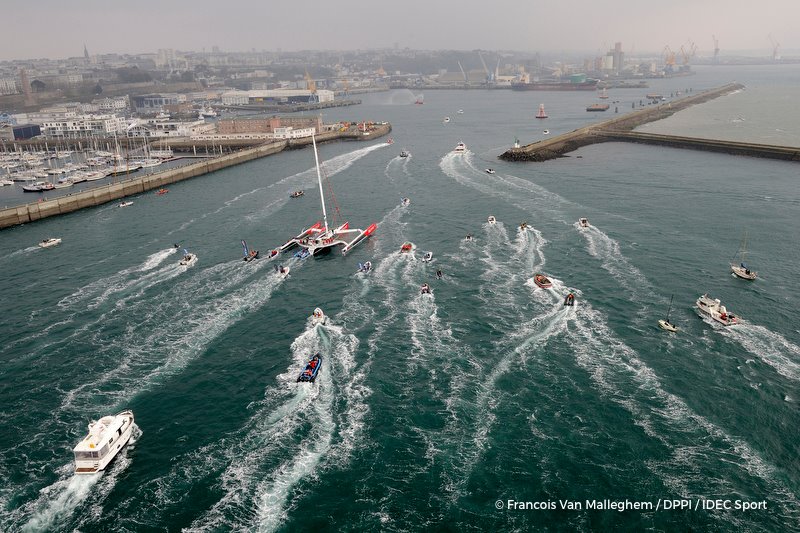
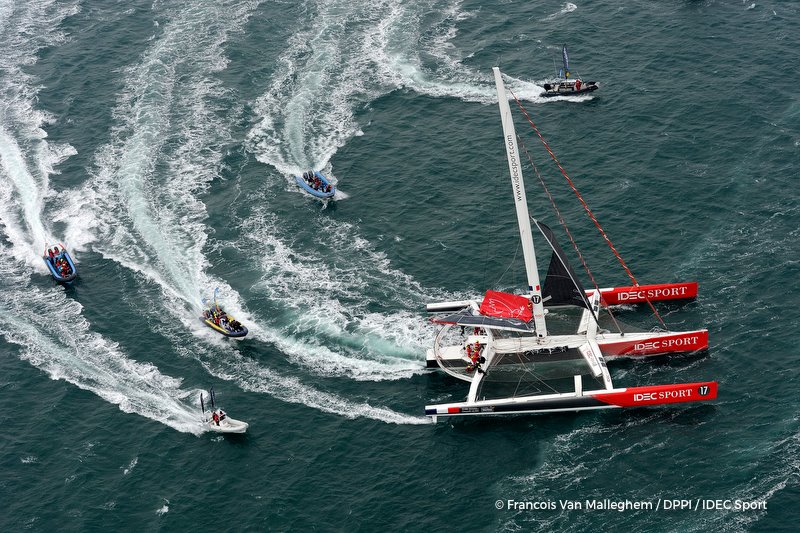
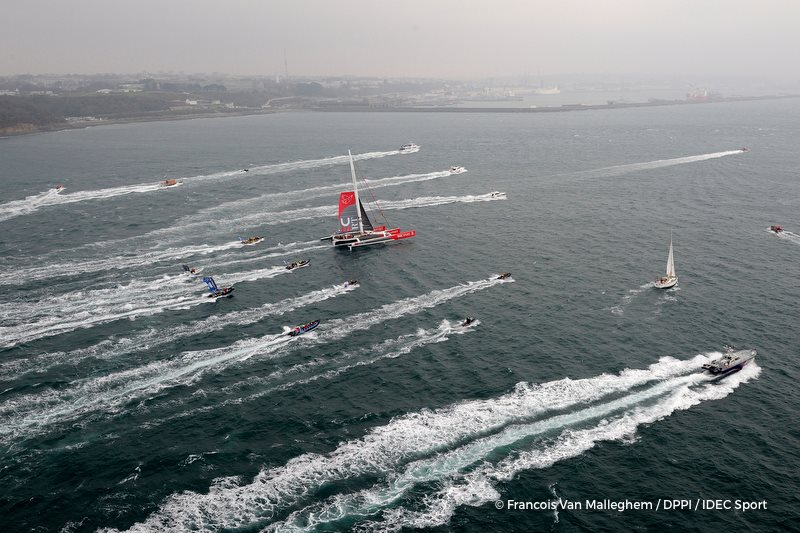
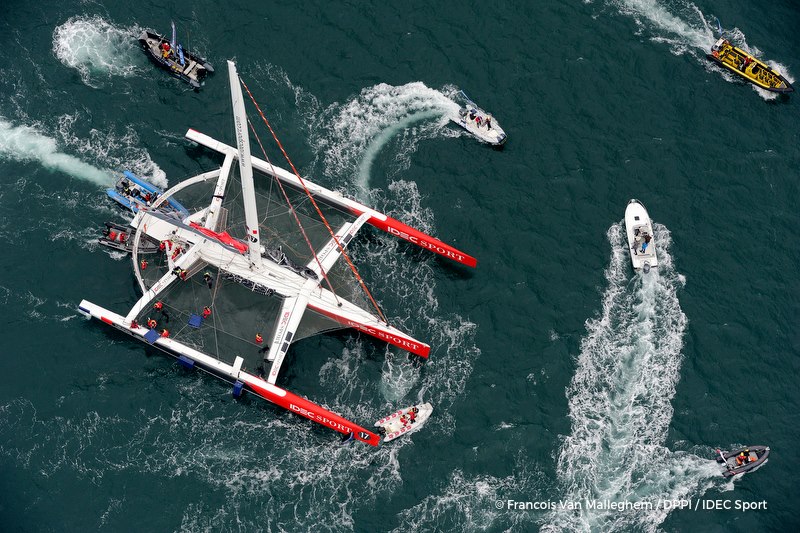
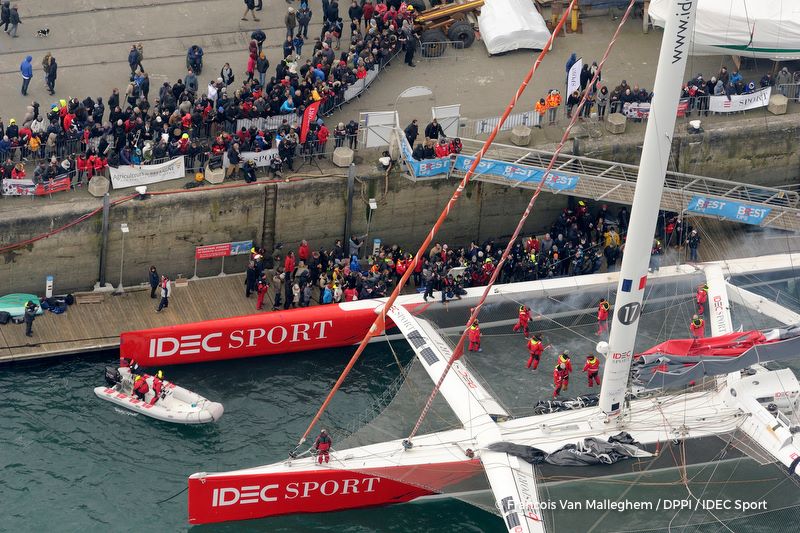
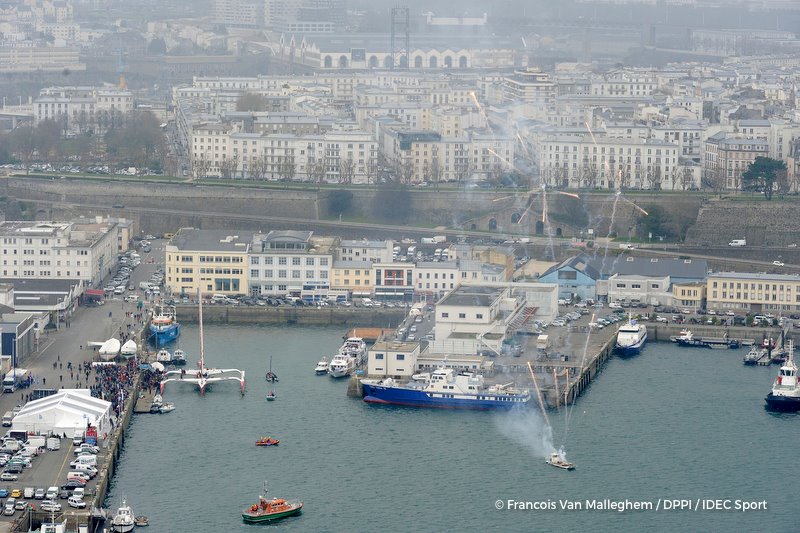


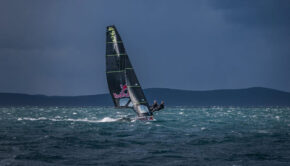

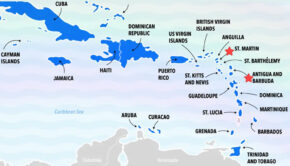
 We’ll keep your information safe.
We’ll keep your information safe.